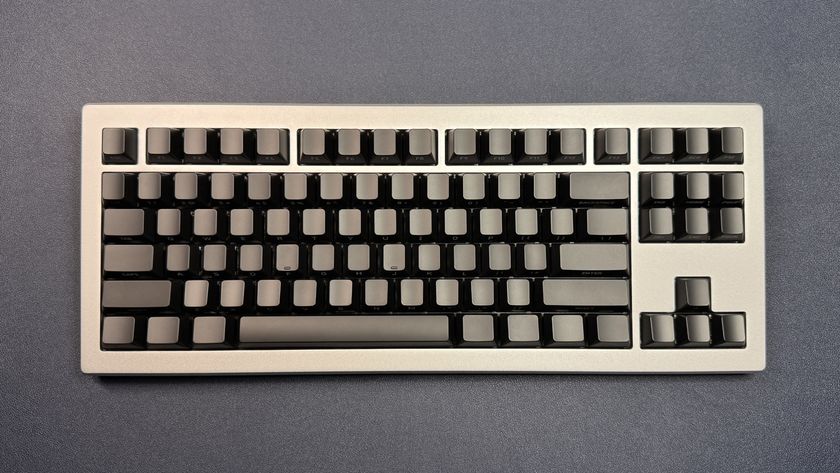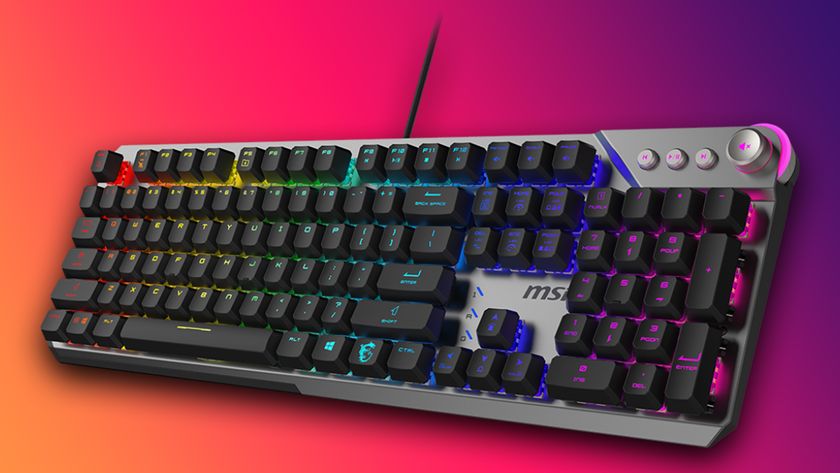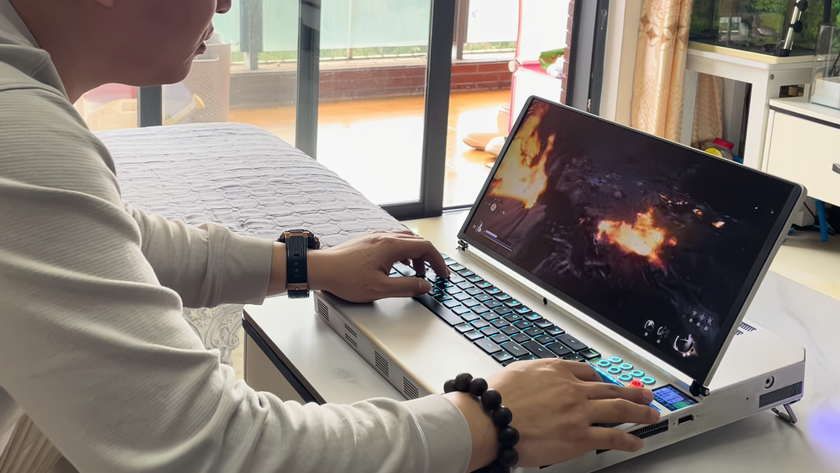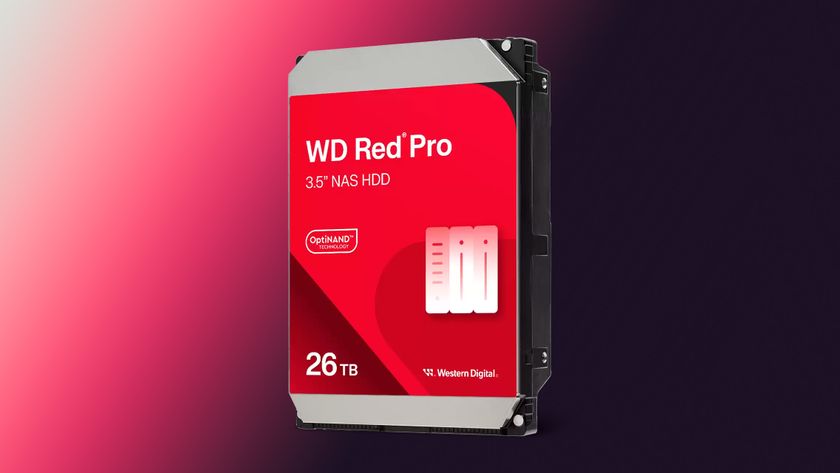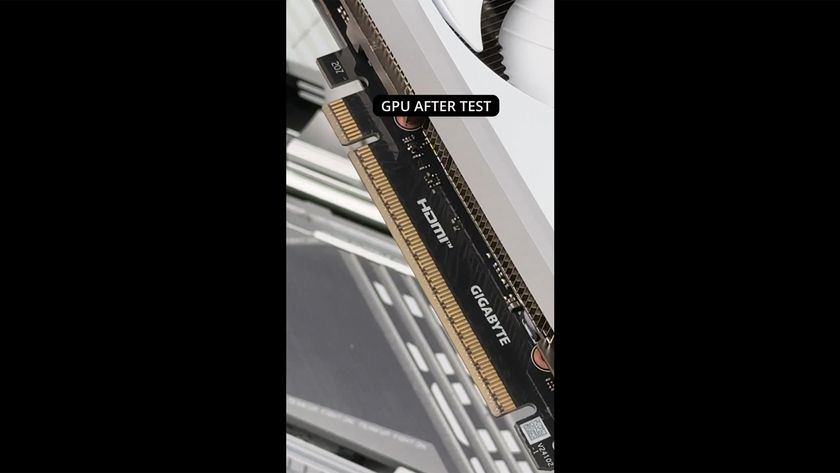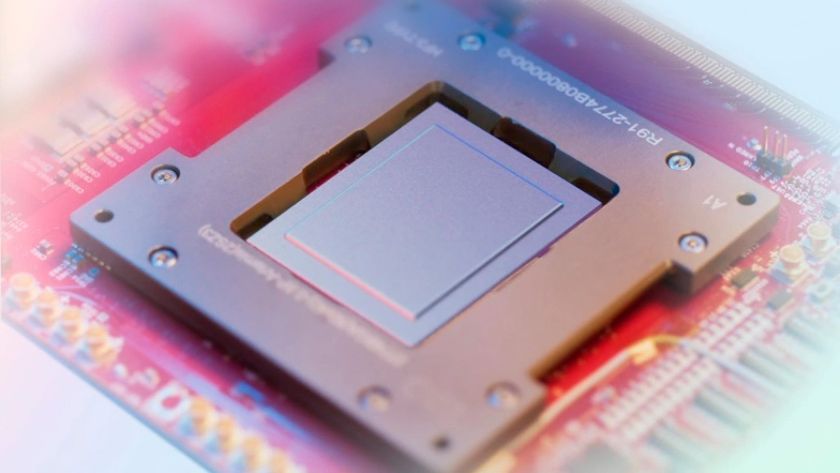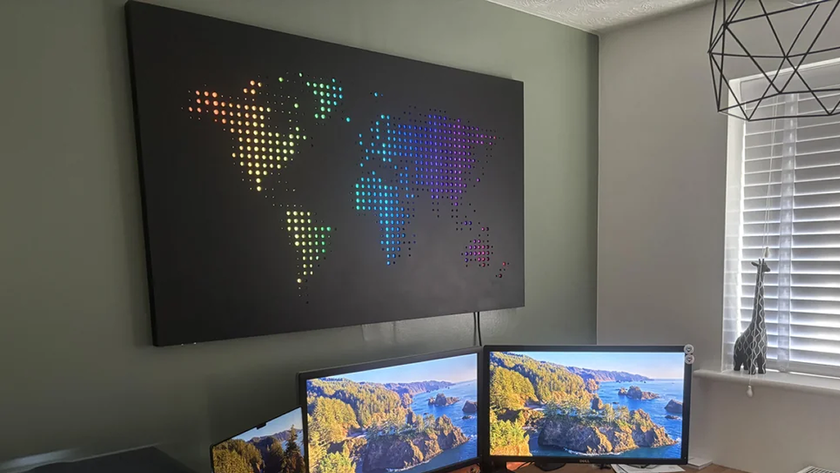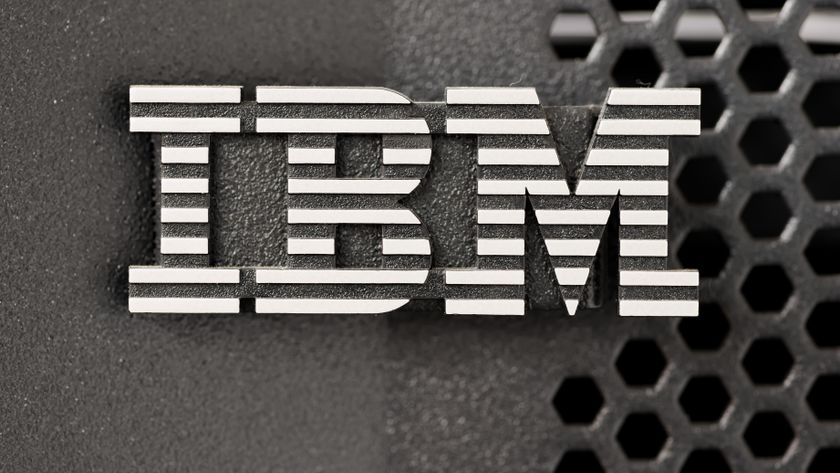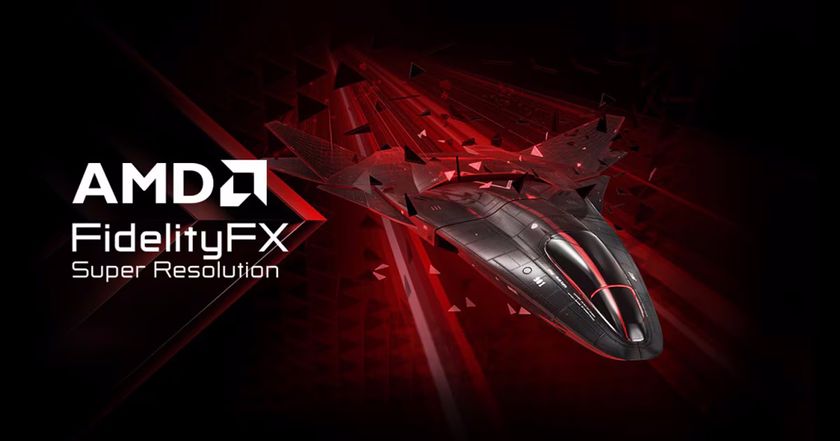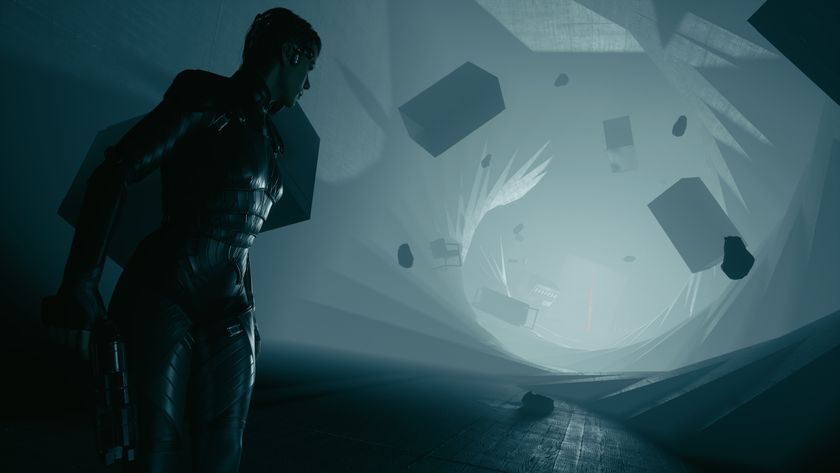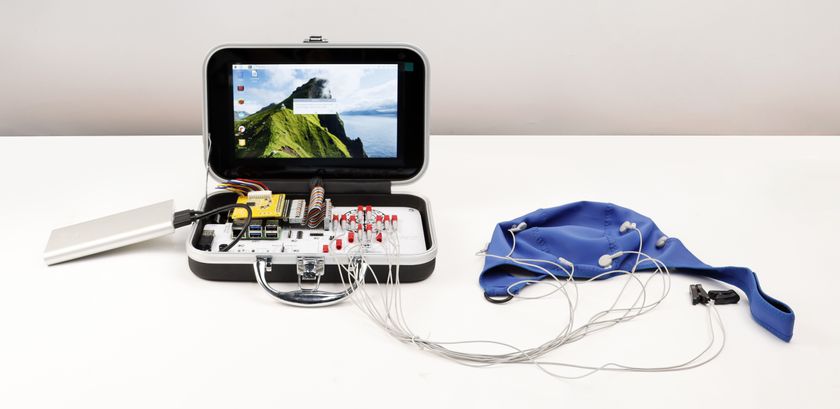The Input Club: Meet The Guys Looking To Disrupt The Keyboard Industry
The Input Club is a small group of enthusiasts who are attempting to disrupt the keyboard industry by designing completely custom keyboards that ostensibly improve upon every single aspect of a keyboard--and open sourcing their designs and giving them away for free. What’s more, anyone with a little know-how and access to the right tools can make their own Input Club-designed keyboards from home.
Thus far, Input Club has designed and released the Infinity ErgoDox, a split keyboard; the Infinity 60%; and the White Fox. Coming soon is the K-Type, which represents the best-yet example of the team’s vision for a better keyboard future.
The group includes Jacob Alexander, who mostly brought the group together and has taken the reigns on writing firmware and developing switch designs; Gennadiy Nerubayev, the PCB expert; Brandon Muzzin, the mechanical engineer who builds the clever case designs; Jeremy Bondeson, who is working on the online configurator that would obviate the need for any OS-level software; and Andrew Lekashman, who described his role as “mostly outreach, copywriting, and general coordination of all the projects.”
We sat down with Jacob and Andrew for a long discussion about what issues Input Club sees in the keyboard market today, and what they’re doing about it.
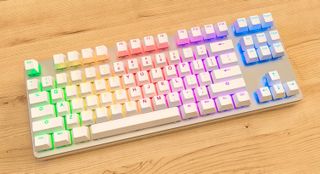
Starting With The Firmware
Jacob Alexander: Keyboards, as people see them, they’re simple--they’re like microwaves. They just work. But in the last 5-10 years, being able to do upgradeable [keyboards]--that allows devices to become better over time.
One of the recent developments that’s come about with esports is N-key rollover USB keyboards. The Infinity 60% was the very first shipping keyboard where it was N-key rollover on both Windows and Mac.
That’s mainly it on the firmware side. Everything else is kind of standard--you add new hardware, you add a little driver thing, and away you go.
Stay On the Cutting Edge: Get the Tom's Hardware Newsletter
Get Tom's Hardware's best news and in-depth reviews, straight to your inbox.
Tom’s Hardware: You said most keyboard vendors don’t do “this.” You mean they don’t bother enabling N-key rollover on all platforms, they just do it on a PC, and 6KRO on Mac--?
JA: They’ve gotten a little bit better, but the N-key rollover has a long history. In 1993 or 1994, the USB spec came together. [There were] these PS/2 keyboards--they were N-key rollover--but [the industry] wanted to move those into the USB spec.
USB has this sort of “dialect.” The way it works is you send the dialect to the computer, and the computer sort of says, “Oh, this is how you’re going to talk. Now we can communicate together.” And you can select a dialog that says “N-key rollover.”
However, BIOS manufacturers and vendors didn’t like this, because now they [had] to fit this complicated thing into the 640K (or whatever) they had. They didn’t want to support it. So, [the] USB [developers] came back and said, “We have this boot mode.”
The computer says, “I’m requesting boot mode because you’re a keyboard. You now have to send this very specific packet format.” This is where the “six keys plus modifiers” comes in; that’s what it supports. Keyboard vendors came along and said, “Why do people need N-key rollover?” So they just all implemented boot mode.
A few years ago, and people in the enthusiast space looked at the USB spec and said, “Hey, this actually supports N-key rollover, and it’s way better than PS/2. It has lower latency, you can specify what you want.” So, when they tried to do this, they got Linux working (with a few quirks) ... Mac took a bit longer, but it also started to work.
The PCB
TH: There were some PCB issues that you also discovered that you wanted to solve?
JA: Like many consumer devices, most keyboards are made in China. When you make things for the consumer space--keyboards especially--the whole goal of the last 25 years is to make them cheap. This is why keyboards really haven’t changed that much. One of the things that sort of waned is the quality of PCBs.
There was a pretty famous keyboard in the enthusiast space--it was a really cheap mechanical Alps keyboard--the soldering on it was so bad that it typically didn’t work! You had to take the PCB and the switches out, put it in the oven, [and] bake it at 250 [degrees].
There’s absolutely no QC [quality control] on most keyboards. They try to use the cheapest processes possible, because typically keyboard PCBs are very simple, so they can be lazy on things. [If] you’re lazy, you’re excluding yourself from using newer technologies.
TH: So basically, going cheaper worked fine until people started demanding more complicated features like programmable keys, and RGB lighting...
JA: Right. You start seeing problems that were there a little before, a lot more. More things can fail.
Andrew Lekashman: And they’re building on a bad foundation that has had everything stripped out…Really, they should just be kind of starting from scratch with something that’s actually good instead of something that optimizes for low cost.
JA: For Input Club, typically we design from the ground up. We’ll have some sort of specification on what the various components are, we’ll try to optimize for cost--”This component doesn’t really matter, this component doesreally matter, so make sure the routing is really nice around that one.” USB Type-C, for example--the connectors we use for strength require a lot smaller trace width, so we have to choose a much better PCB fab that has lower tolerances.
So [we are] optimizing not just for cost, but for ease of manufacturing. You can bring the tolerances low and use a cheap fab; however, what you’ll find is that your QC will go out the window. You don’t have any yield anymore.
[We are] just trying to balance the typical engineering problems: cost, quality, and speed.
The Chassis
TH: What about on the chassis side of things?
JA: Whenever you build custom products, this is one of the really tricky parts. [You say], “I have this really cool design, but now how do I make a lot of them?”
AL: There’s different styles of making things. Most keyboard manufacturers design for mass production--which allows them to become really cheap. But when you design for mass production, one of the inherent things you have to deal with is up-front investments. You have to put $50,000, $1,000, $250,000 into tooling fees.
Up to this point and continuing on with the K-Type, all of our products have essentially zero upfront tooling costs on our part...which allows us to revise and improve upon our designs. And it also has one other really interesting feature, which is [that] a person who is really motivated could go make this at home.
I’ll give you an example with the Ergodox. Instead of doing an injection-molded case, the case is created from layers of cut acrylic, which is a really easy manufacturing technique. You’re buying acrylic, and you’re cutting it to shape. And then we have a single piece of metal, that kind of fits in with the acrylic, that you also cut with a laser. So anyone with a CNC machine or a laser cutter could just go build this with materials that cost them $20-30. You don’t have to be a factory to reproduce these.
So with the Infinity keyboard, the original design that we put together was a bent metal case that had no injection molding. Due to demand, we added options for kind of an injection-molded case that was really popular and was already kind of a stock piece and was acquirable on Alibaba and Ali Express for like $5 or $6. So we considered that to be a “component” just because it was easy to get.
But the first design was just a sheet of steel that had holes cut out of it and then was bent to look like a keyboard.
TH: I think what some people might say is, “Well that’s really cool, but what’s the problem with chassis that we get on mass-produced keyboards?” I mean, it’s just a box, right?
AL: There’s more to it than that.
JA: There’s a box, there’s the aesthetics. Most gaming keyboards kind of look ugly, to be honest. They look kind of gaudy. You wouldn’t really plug one in next to your fancy iMac or something. I mean, it looks fine in most people’s man caves, but bringing it to an office? It’s not something you see on a CEO’s desk. That’s one aspect.
The “how it’s built” gets more interesting because how the keys are mounted does affect the feel and the sound a lot.
A lot of the nicer mechanical keyboards--you’ll notice they have some heft to them. They either have a steel or aluminum plate for mounting the switches. They don’t move around. The keyboard doesn’t feel squishy when you type on it.
The classic enthusiast test is you pick up a keyboard lengthwise, and you twist it. If the keyboard twists, that means there’s going to be a lot of flexion there. So, aluminum will flex more than, say, steel--in general, depending on how you design the case. (The K-Type doesn’t bend when you do that; for how light it is, that’s really cool.)
But [making it heavy] isn’t going to actually make it better. If you look at keyboards say 30 years ago, like the Model M keyboards that are still being used today, they’re perfectly fine. They were built to last a long time. And that’s something that [by] going cheaper [the industry has] gotten away from.
Talking About Switches
TH: Regarding switches: Again, what are the problems you see, and how are you solving them?
JA: Cherry had a more modular design so people could use it more; that’s really why Cherry became popular. And they were the most well-suited to make all these different keyboards. [But] anybody who dealt with Cherry knows that they’re actually kind of hard to get switches from, unless you’re a big player and you have the right contacts.
[Then] all these Chinese clone companies said, “This is dumb. China needs lots of keyboards, too.” So once the patent expired--there were [Cherry MX] clones before that--but once that expired, they said, “Okay, we can market to the world now.”
These companies are actually trying to make them a bit better; Cherry just wants to keep them the same. The only thing [Cherry has] done really in the last few years is RGB, and then the quiet switches. But they really haven’t done anything else with it, and those are two things that have been done before. Backlit switches are not a new technology; they’ve existed for 50 years.
So, you have this Cherry design, which is...Okay. But it can be done a lot better.
One of the reasons I’m in keyboards, personally, is that it’s not just keyboards themselves that need to be pushed forward; I believe switches need to be pushed forward, as well. And the only thing people have been doing is, like, changing actuation points and changing height. There’s no real research into what makes tactility good. Why people like it. What makes a good sound.
And this is a lot trickier to do ... They’re rather tiny components, and the injection molding and testing...it’s something that Input Club is trying to get into. It’s one of the aspects that we don’t make ourselves yet, and that’s what I want to do. I want to make switches.
TH: If I’m a skeptic right now, I’m going, “Okay, so what’s better? What can be done better?” Because my switches seem fine. What are they lacking?
JA: That’s a perfectly good question. In every switch there is a spring; you need to generate force somehow. And in the enthusiast space, there’s gold-plated springs, lube--all these different things. The reason that these are used is because coil springs, when you compress them, they move. They sort of bind and push together.
You can do certain things to sort of alleviate these, but you’re never really solving the problem. There are different kinds of spring designs that have been used--for example, a leaf spring, which is a bent piece of metal which does not bind. A torsion spring (on the Burrows Opto-
electric keyboard, I think it was)--they use a different kind of spring, [and] you don’t have the binding of the spring anymore. So before you put any lube, or any special type of metal...before any of that, [these other types of springs] are already going to be smoother.
One of the ways I like to demonstrate this to people is to take, say, a Cherry MX Black or MX Red switch and put it next to their ear. You can hear the spring moving around. That sound turns into friction. You can make a smoother switch just by changing the spring, how the spring is designed.
Other parts are plastic tolerances. One of the things manufacturers do when creating molds is they want it to last so many years. And so you need to design the tolerances of your switch so that either it doesn’t wobble or that you can use your mold for a long time.
It’s very difficult to QC every single switch that comes off the line. You think of how many switches are on a keyboard, how quickly you can press, and how quickly you can analyze it…[full QC] is most likely not going to happen. You’ll have bins of things. So if your tooling for these switches is poor, then, well, you're going to have a bad time.
Another aspect is contact points. In Cherry switches, there are two pieces of metal--gold-plated cross points is Cherry’s patent, I believe. They’ve been using that since at least 1959. And that is just one way of doing it. The way the contact points come together actually adds more tactility to the switch; it changes how the switch feels.
You could do it other ways, like Topre capacitive keyboards [do]. There is no physical thing that has to touch. Or you have some of these infrared keyboards [and] more recently, some of these analog switch keyboards. Personally, I feel that those methods are kind of the future of keyboards; the contact point is a lot easier to do, but it adds another layer of complexity.
TH: What are you guys doing to fix that?
JA: Well, you can say, “Make the best switch in the world,” but then you can't manufacture it. To begin with, I want to prove that Input Club can actually do something, and do it well. We’ve been working on ... a new kind of tactile curve that attempts to solve a problem I’ve identified, comparing most kind of Cherry tactile switches compared to Topre or Model M switches, and sort of...the fundamental reason of why they feel different. So I have this curve that I believe will make it better...but we’ll see. I still haven’t gotten the samples from the factory yet. [laughs]
TH: So that’s still a little bit of a question mark. You’ve identified some potential issues…
JA: Yeah, some potential ways of doing tactility differently. Rather than being a “point,” [it can] be a smooth “event” that is tactile. The “point” is kind of like punching a wall, versus say punching a mattress; you’re going to hurt your hand if you punch the wall, whereas [with] the mattress, you kind of ease in. But you still know you did it, it’s still tactile.
Lighting
TH: What are the current limitations of lighting then, and what are you guys doing to do it better?
JA: Lighting is tricky. In most older, traditional Cherry switches, you had this through-hole LED, you had single color--those were designed for, like, caps lock. They weren’t designed for full underlighting keyboards. They used this design for a long time. [Then] RGB came along; some of the Chinese clone [makers] said, “Let’s make this four-pin, through-hole LED,” so now in manufacturing, you have to stick all these LEDs in, if one fails...anyway, it’s a nightmare.
So Cherry said, “Hey, we can make RGB switches.” But there’s a problem with these RGB switches, where now you have a surface-mount LED, and the light needs to transfer from the PCB, through the switch, above to the key cap, through the key cap, and above.
So you have all these medium transitions, and a bunch of air. Air diffuses light a lot. One of the things that we took a lot longer on the K-Type than we expected to, was fixing this. How to make it actually look better. How to make it sort of dazzle, be really bright. Really what it comes down to is, every switch needs a proper light pipe.
If you ever take a look at a Cherry RGB switch, they don’t actually have a light pipe--they’re translucent. They just have a space for the LEDs. A light pipe generally has a lens right above it, and all these different things. So just choosing the correct switches, and choosing a manufacturer that can do this is rather important. Then you don’t have to choose super bright LEDs; but if you dochoose super bright LEDs, it just looks that much better.
AL: Also, if you choose the bright LEDs and leave them on the brightest setting all the time, they do burn out. And you have power requirements and power issues, as well, where a lot of RGB keyboards from Chinese manufacturers will make you have two USB cables just so that it can work. And that’s kind of a major roadblock, so we wanted the most efficient solution with the switch--and that’s a light pipe.
TH: Is that not what Logitech is doing [with its Romer-G switches]?
JA: They have a light pipe, and that’s why it looks so much better than other keyboards. They did that properly. They chose a really small LED though, which is kind of confusing. They could have been even brighter.
TH: So then, the trick with LEDs is not so much about the parts on the PCB, it’s really about how you choose the best LED that offers the brightest light and the longest burnout time, and then how do you aim that light in the most efficient way.
AL: Yeah.
JA: You don’t want it reflecting inside the keyboard; you want it going out of the keyboard.
TH: So who else is doing it better than Cherry, then, aside from Logitech?
JA: Currently, the best light pipe solution for mechanical switches is Kaihua (or “Kailh”). They have the best option right now, by far.
Hot-Swap Switches
TH: What about hot-swappable switches?
JA: Hot-swap switches partially seem kind of like a gimmick to some people, but it’s really a very interesting manufacturer optimization, because it dramatically simplifies the way PCBs are made.
Most keyboards, after they’ve made the first pass, putting the components on the boards, they have to--someone, either by robot or by hand--places every switch, and then they’ll have to wave solder the whole thing. So there’s a second soldering process that can affect the PCB, [and] it can damage other components. Because now you’ve just resoldered a board that you really shouldn’t have.
Hot-swap kind of removes that whole thing. You can just do the whole PCB in one pass, put it on the keyboard, and just have a robot put the switches in. It removes that whole complexity aspect. So your reliability goes up just from that, and you get the other bonus of, you can now repair a switch rather easily.
AL: There’s one other bonus that's particular to us; a lot of our keyboards are kits, where the end user has to kind of solder the switches on to the board. And as we move forward entirely into hot-swap as a thing we’re adopting, that’s kind of no longer necessary. If you don’t know how to solder, you can still buy one of our keyboards. We thought [hot swap] was a hugely attractive feature.
TH: Is there any soldering at all with your kits, then?
AL: The existing ones, yes. But with the K-Type, no.
TH: Will the K-Type have hot-swappable switches?
AL: You betcha.
Open Source Designs And Market Disruption
TH: What I’m hearing you guys say is that you’re trying to make the very, very best Thing. You’re unbound [by constraints of mass production costs]. And part of that is you’re making designs that anyone can replicate, and you’re handing it all over. You’re trying to disrupt the industry, not in the sense that you’re trying to eat into sales of all these big keyboard manufacturers, but in the sense that you’re trying to create something that’s better than the Thing that they sell, in an effort to create demand among consumers so that the big keyboard companies will follow what you have done.
JA: Yeah.
AL: We also make the process really easy by open-sourcing all the designs and releasing them for free over the internet.
JA: The whole goal is to get other companies to copy us. That’s really the goal. Here’s a really good keyboard: You don’t have to take all the aspects, but here’s some really good parts. Please copy it.
AL: The only requirement that we ask I guess is if they do that, they also release their designs for free on the internet, which is the open source way of doing things. Kind of creating the best possible thing, making it open, so that the whole industry becomes open, as opposed to what it currently is.
The K-type will be available early in 2017.
Disclaimer: Members of Input Club have written for Tom’s Hardware.
Update, 12/6/16, 11:20am PT: Clarified that the Input Club developed the "Infinity ErgoDox"--the "ErgoDox" was made by a different entity.
-
videobear All of that is icing on the cake. What's needed is a completely new input method to replace a rectangular array of 106 keys. Back at the beginning of personal computers, I saw a device that was a hemisphere, like an oversized mouse. There was a key under each finger. You entered data by pressing the keys in different combinations and never had to lift your hand from the device. Of course, you had to learn an entirely new system of "typing"...but I'm only using this to illustrate the level of innovation that's really needed. Not new key switches and fancier lighting.Reply -
Doggie314 ducky keyboards are the best i have ever usedReply
will be hard for you to improve on my blues, greens and browns from cherry but good luck -
mavikt Very nice initiative!Reply
I wonder what their take is on the stroke length on the switches?!
I'm still using Logitech UltraX keyboards both at home and at work due to having a hard time finding a similiar compact, quality feel and short stroke equivalent.
The office keyboard has gotten dimples in the keys out of wear and the one control key has totally collapsed since I tried to remove and clean it.
I got a new SteelSeries Apex M500 home for evaluation (typing on it now), and it's a nice keyboard I guess, but I'm having a hard time getting over the stroke length.
I'm literary stumbling over the keys; 2mm actuation, why?
I can understand gaming if you have your finger set; you could hoover those 2mm, +/- 0,5mm, press/release. But keyboards are not type-writers.
I guess the optimal would be the shortest stroke possible, with a tactile feedback depressing/releasing the key, and the the tactile feedback of finding the keys when repositioning. Unless you think touch-screen typing on your phone is the best thing that ever happened. Yuk!
